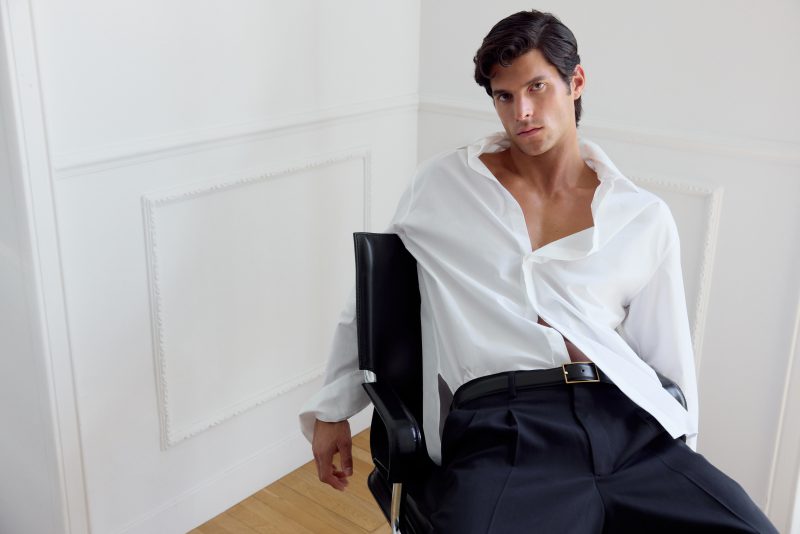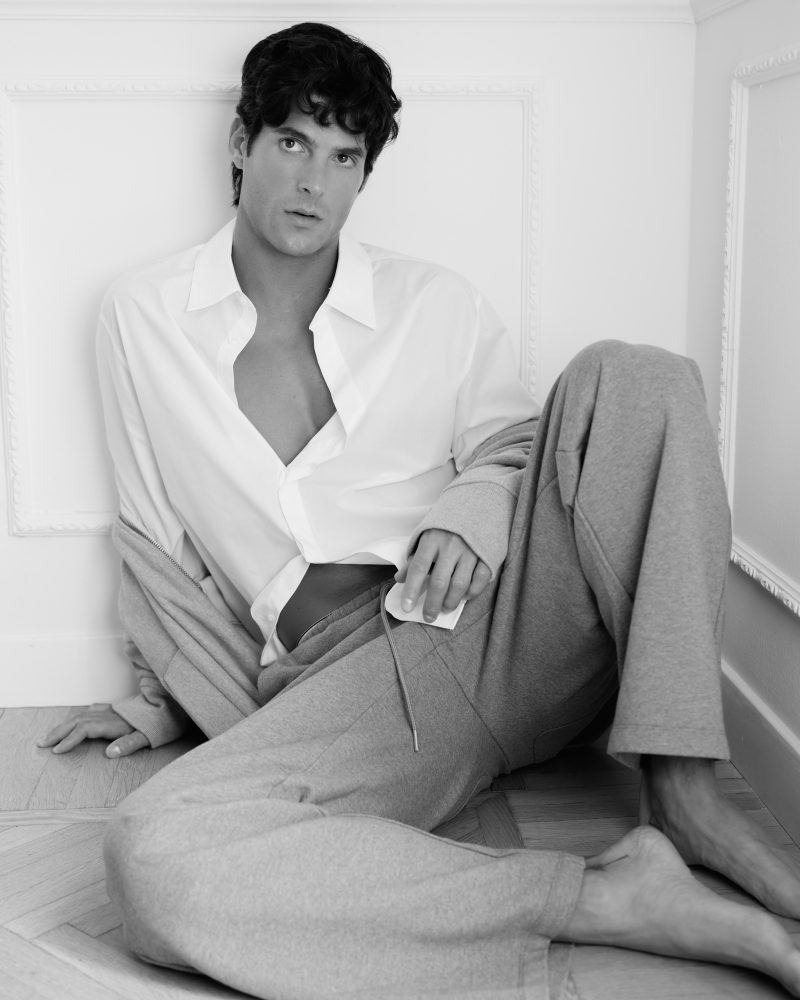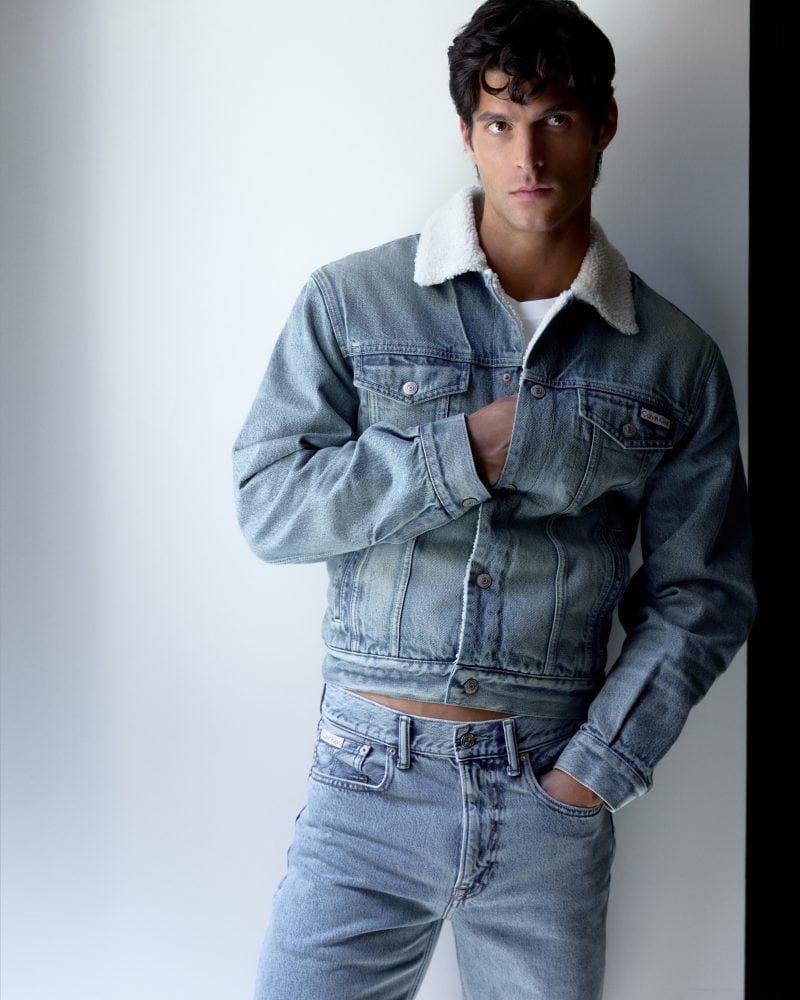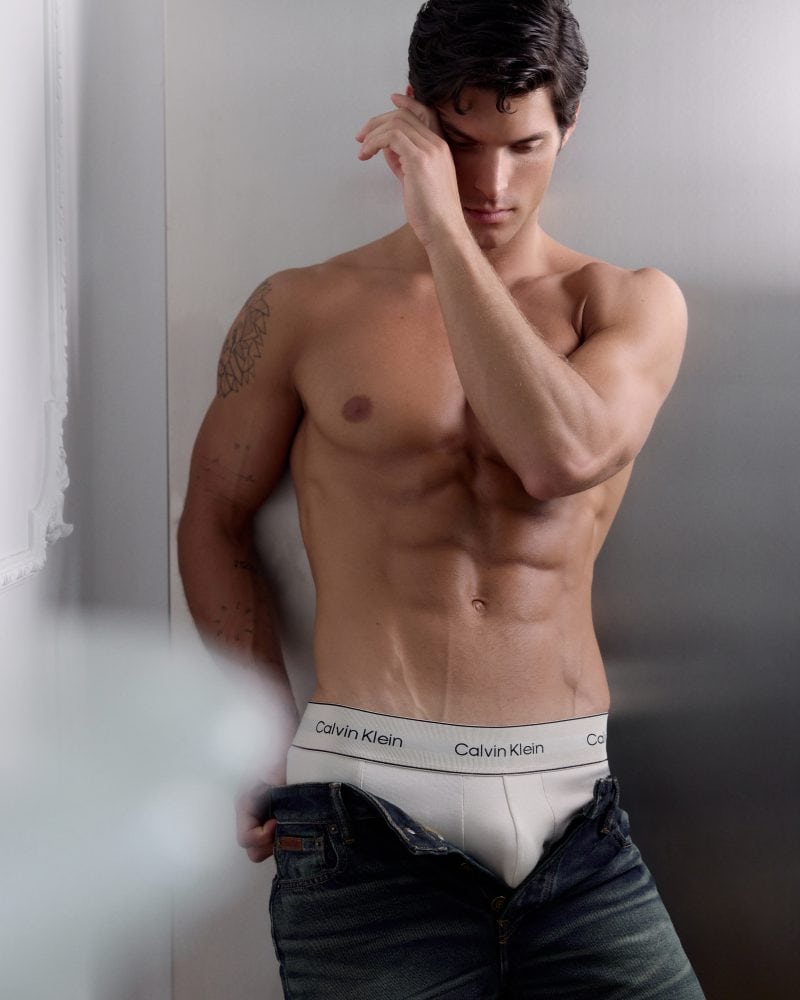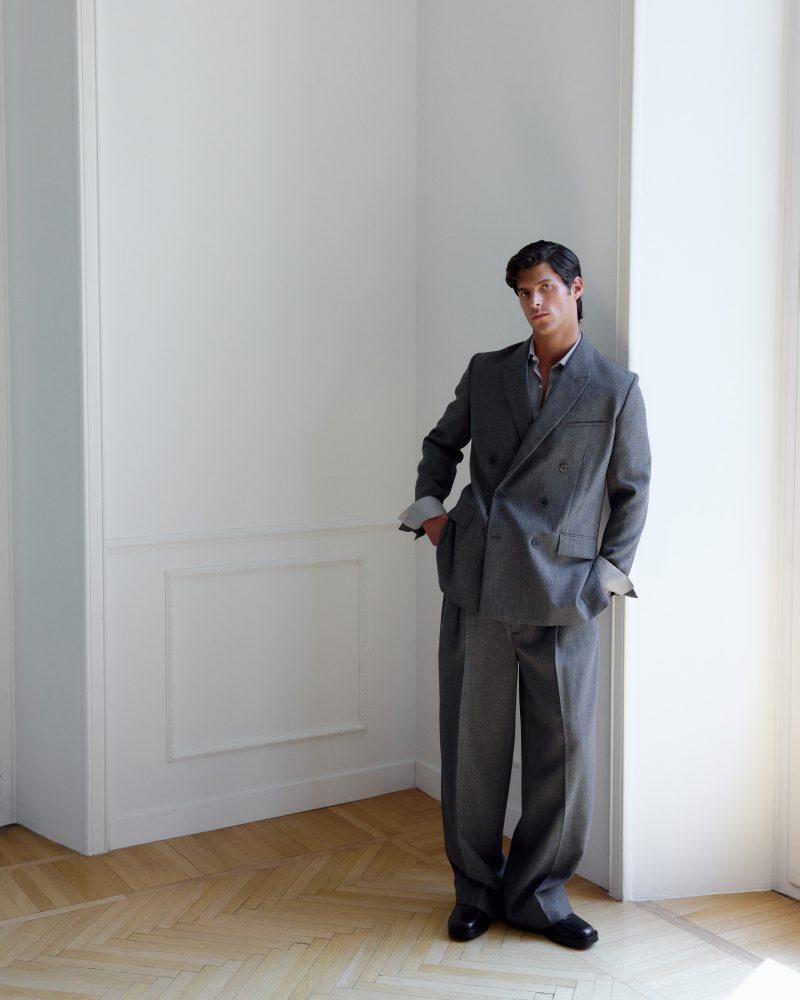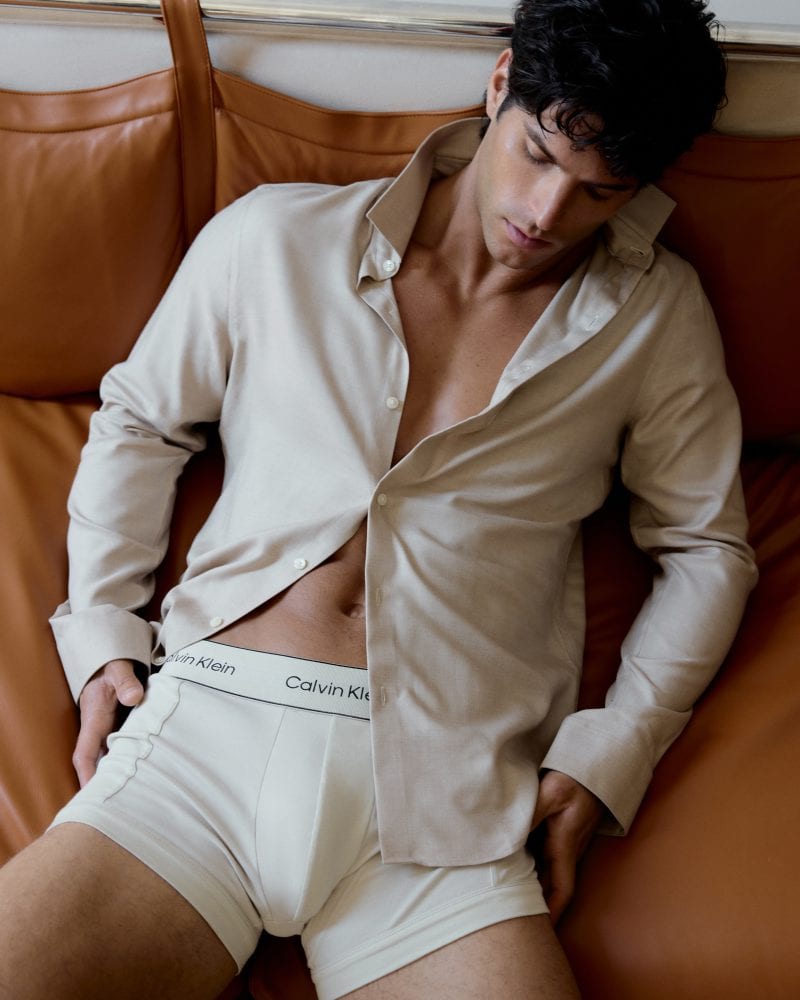If strength was yesterday’s measure of masculinity, today its grammar is being restructured around intimacy. For decades, the cultural script for manhood was built on stoicism, performance, and external validation. But today, younger generations challenge that narrative by recasting intimacy not as weakness, but as a new expression of strength.
Edoardo Conti, a Milan-based model and content creator, describes this shift with clarity. ‘Intimacy isn’t only about romance,’ he says. ‘It’s about being seen without having to perform. It’s about trust, friendship, even vulnerability—showing a part of yourself that isn’t polished for the outside world.’
That sentiment feels especially urgent in an age when men, especially those living in public-facing roles, are taught to curate themselves endlessly. For Conti, intimacy functions as a counterweight to the hyper-visibility of social media. ‘Online, people expect you to always be a character,’ he continues. ‘But in reality, confidence comes from those moments when you can just exist, unguarded.’
This rethinking of identity and intimacy dovetails with fashion’s evolving approach to masculinity. For decades, clothing functioned as armor: sharp tailoring, hard edges, exaggerated shoulders. It was fashion as defense. But in recent years, style has become less about projection and more about reflection: how what we wear shapes who we are within ourselves.
Conti points to fashion as an essential tool in his own process of self-actualization. ‘When you wear something that really resonates with you, it helps you inhabit yourself differently,’ he says. ‘Fashion can give you permission to be softer, or louder, or more sensual. It lets you try on versions of yourself until one feels true.’
Nowhere has this interplay between confidence, intimacy, and identity been more vividly explored than in the long-running visual lexicon of Calvin Klein. Since the 1980s, the brand has championed an image of masculinity that was as much about vulnerability as it was about strength. Think Mark Wahlberg and Kate Moss in stripped-down denim, or the unforgettable campaigns of the 1990s where young men reclined in white briefs, their expressions less confrontational than contemplative.
Calvin Klein’s enduring relevance lies in its ability to bridge public iconography and private identity. While most brands in the late 20th century focused on power suits and corporate ideals, Klein’s lens zoomed in closer, asking men to strip down—literally and figuratively. In doing so, it offered a new blueprint for masculine self-confidence: one that didn’t rely on grand gestures, but on small acts of self-acceptance.
This quiet revolution feels aligned with the current generational moment, when men are actively negotiating the boundaries of who they can be. Fashion is no longer a uniform dictated by social expectation—it is a laboratory for self-expression. From the rise of gender-fluid dressing to the resurgence of classic minimalism, men are using clothes to explore identities that are layered, contradictory, and deeply personal.
Perhaps this is the new paradigm of masculinity: less about domination, more about presence. Less about what others see, and more about how one sees oneself. In the end, the most radical act of self-confidence may be the simplest one—choosing to show up, unarmored, to be known.
Calvin Klein has been narrating this story for decades, offering men not just fashion, but a language to articulate intimacy and identity. In its stripped-back silhouettes and iconic imagery lies a quiet reminder: the strongest expression of masculinity is not performance, but truth.

